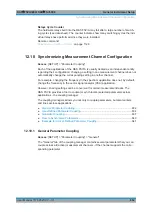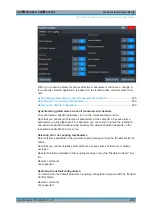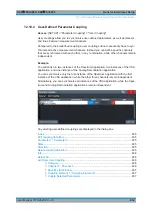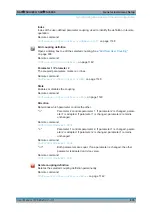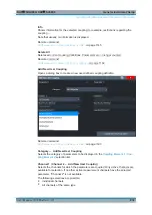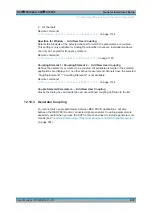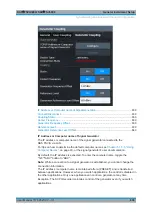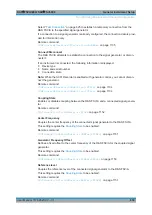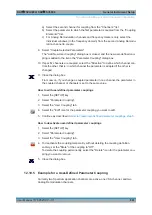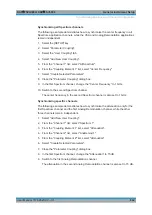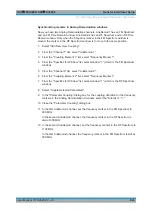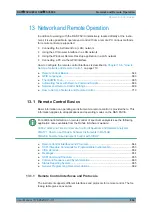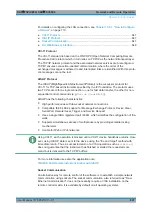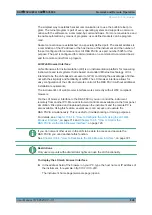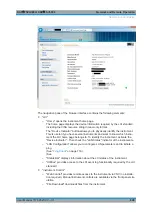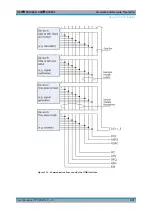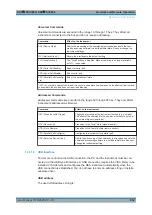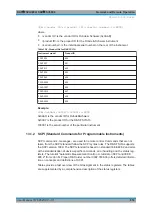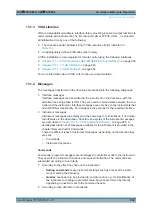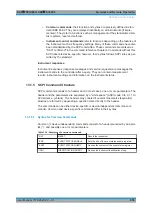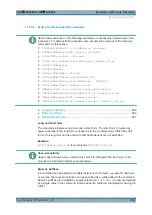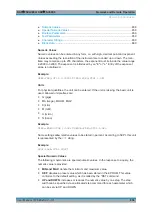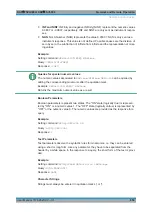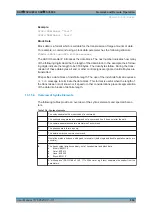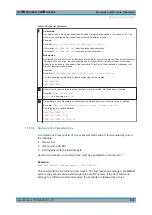
Network and Remote Operation
R&S
®
FSVA3000/ R&S
®
FSV3000
646
User Manual 1178.8520.02 ─ 01
VISA library
Instrument access is usually achieved from high level programming platforms using
VISA as an intermediate abstraction layer. VISA encapsulates the low level VXI, GPIB,
LAN or USB function calls and thus makes the transport interface transparent for the
user. See
Chapter 13.1.3, "VISA Libraries"
on page 654 for details.
The R&S
FSV/A supports various LAN protocols such as LXI, RSIB, raw socket or the
newer HiSLIP protocol.
IP address
Only the IP address or a valid DNS host name is required to set up the connection.
The host address is part of the "VISA resource string" used by the programs to identify
and control the instrument.
The VISA resource string has the form:
TCPIP::host address[::LAN device name][::INSTR]
or
TCPIP::host address::port::SOCKET
where:
●
TCPIP
designates the network protocol used
●
host address
is the IP address or host name of the device
●
LAN device name
defines the protocol and the instance number of a sub-instru-
ment;
–
inst0
selects the VXI-11 protocol (default)
–
hislip0
selects the newer HiSLIP protocol
●
INSTR
indicates the instrument resource class (optional)
●
port
determines the used port number
●
SOCKET
indicates the raw network socket resource class
Example:
●
Instrument has the IP address
192.1.2.3
; the valid resource string using VXI-11
protocol is:
TCPIP::192.1.2.3::INSTR
●
The DNS host name is
FSV3007-123456
; the valid resource string using HiSLIP is:
TCPIP::FSV3007-123456::hislip0
●
A raw socket connection can be established using:
TCPIP::192.1.2.3::5025::SOCKET
Identifying instruments in a network
If several instruments are connected to the network, each instrument has its own IP
address and associated resource string. The controller identifies these instruments by
means of the resource string.
Remote Control Basics

